Great Pretenders: Buttons that imitate
In a bag of buttons that arrived today by post I spotted some “great pretenders’. Button manufacturers have long used one material to imitate another. That doesn’t necessarily mean the button is shabby or unattractive; think of black glass imitating real jet, or glass imitating passmenterie. In some cases, the imitation was ethical; think of celluloid developed as a humane replacement for ivory or horn dyed to imitate turtle shell.
Imitation Pearl
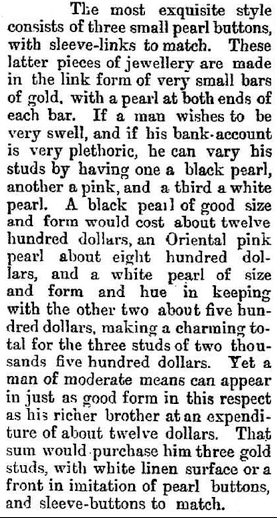
The Armidale Express and New England General Advertiser (NSW), 19th November 1889 page 7, from a longer article about the use of studs and scarf pins. Modern examples of ‘imitation pearls’ are found below. In the 19th century these were made of glass beads coated either inside (if hollow) or outside with ground fish scales.
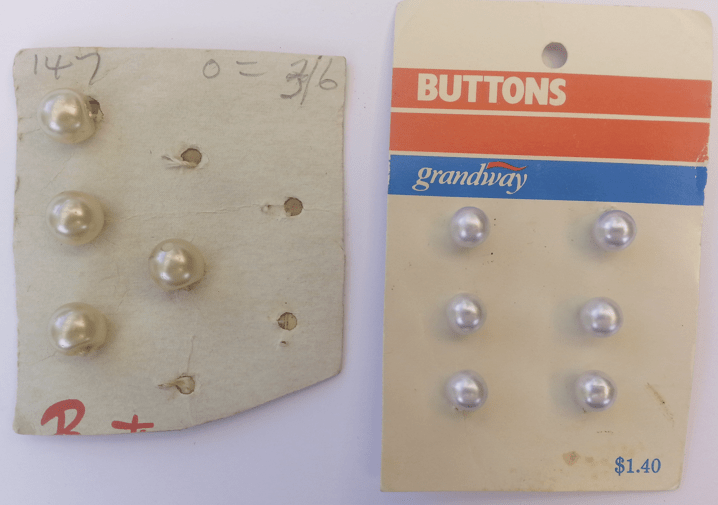
1950s Beutron and 1980s Grandway
Beutron’s ‘Tecpearl’ (polyester) buttons were meant to imitate pearl, but be more durable and washable.
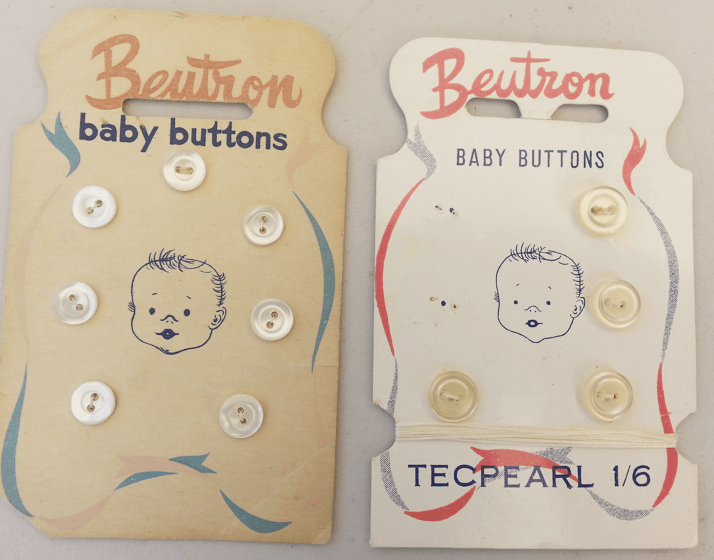
Left: Real pearl shell. Right: polyester.
Imitation fabric

Sunday Times (Sydney), 31st May 1903 page 6.
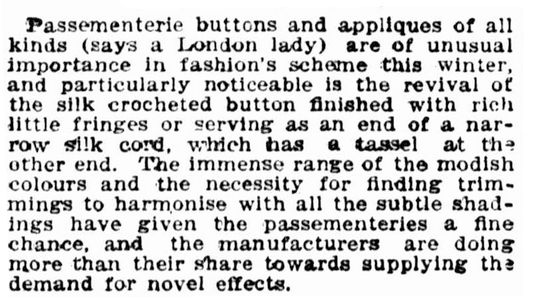
The Sunday Sun (Sydney), 13th January 1907 page 7. As written here, passementerie refers to ornamentation by lace, thread, embroidery and bead work, not just buttons.
Imitation fabric and passementerie buttons were moulded of glass, and also plastic, as below.
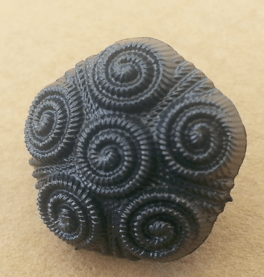
Fake gimp braid.

Brown plastic moulded with a fabric pattern, then painted yellow and buffed back. Some of the paint has worn off.
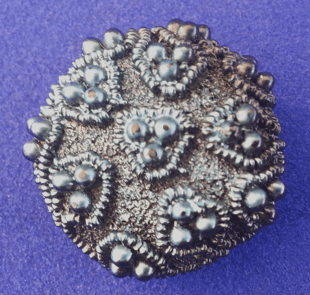
A moulded plastic button with a good impersonation of beaded satin.

For any comments or questions, please use the Contact page.
